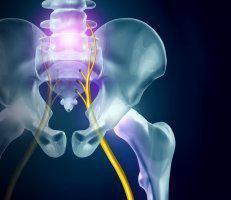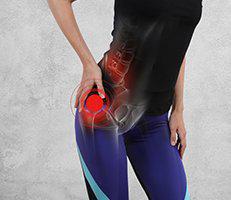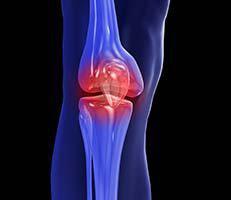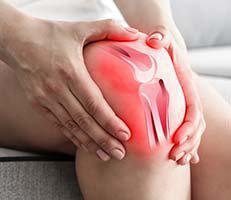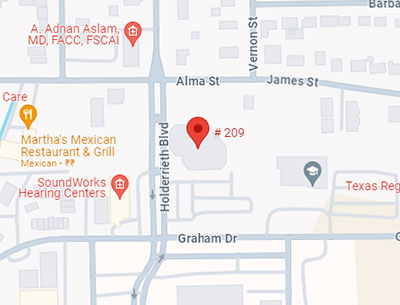How Pain is Treated
Pain can be very difficult to manage, as the treatment varies from patient to patient. Sometimes the treatment path for a patient can be as simple as resting and aspirin, or as involved as taking medication or having surgery. Usually, physicians will follow a treatment plan that begins with less invasive therapies and progresses to stronger, more invasive solutions depending on the type and severity of pain. Your treatment plan will also depend on how an individual responds to various treatment options.
When it comes to treating pain, there are three levels to consider:
- Level 1 – Basic Pain Therapies
The first level includes conservative treatment options. - Level 2 – Mid-Level Pain Therapies
The second level of treatment options includes more aggressive approaches. - Level 3 – Advanced Pain Therapies
If it is not possible to achieve acceptable pain relief with basic or mid-level therapies, pain specialists will try more advanced treatment options.
LEVEL 1
Basic Pain Management & Treatment Therapies
During the first level, your pain specialist will offer conservative treatment options. These treatment options will include rest and nutrition, exercise and physical therapy, non-steroidal anti-inflammatory drugs (NSAIDS), and cognitive and behavioral modification. Basic therapies are the first step designed to lessen pain, as the goal of these therapies is to reduce pain and improve mobility.
Rest and Nutrition
Your pain specialist will usually recommend sufficient rest and proper nutrition as a first line of therapy for the treatment of chronic pain. A rested and well-nourished individual is better equipped to battle physical stress and properly recover from pain.
Exercise and Physical Therapy
In addition to rest and medication, your physician may recommend a program that includes physical conditioning to improve flexibility and strengthen your body for a greater chance of recovery. Your physical therapist will evaluate your baseline condition and tailor a plan specifically for you.
Non-Steroidal Anti-Inflammatory Drugs (NSAIDS)
The second line of therapy for chronic pain is often non-steroidal anti-inflammatory drugs (NSAIDS). These include common over-the-counter medications, such as aspirin, acetaminophen, and ibuprofen. These medications are often used to treat fever, swelling, arthritis, and other painful conditions. Physicians may prescribe stronger NSAIDS if rest and over-the-counter medications do not sufficiently relieve pain. Side effects of NSAIDS are usually mild, and may include nausea, heartburn, rashes, or upset stomach.
Cognitive and Behavioral Modification
Because pain not only affects you physically, but also takes a toll on your mental and emotional well-being, physicians often prescribe cognitive and behavioral modification techniques. These techniques are used to help you relax, reduce stress and to cope with your pain. Forms of cognitive and behavioral modification include meditation and relaxation training, biofeedback and counseling.
LEVEL 2
Mid-Level Pain Therapies
If your pain does not respond to conservative approaches, a second line of therapy may be needed. The therapies offered in the second level can be used in conjunction with level 1 treatment.
Tanscutaneous Electrical Nerve Stimulation (TENS)
A TENS unit is an external stimulation device that sends electrical impulses through your skin to the painful area. Instead of feeling pain at the site, patients feel a tingling sensation. Unlike a Spinal Cord Stimulator, the TENS device does not apply energy directly to the nerve, as it must be transmitted through the skin and muscle to reach the nerves. TENS can alleviate mild to moderate pain, but is often ineffective in treating more complex conditions.
Opioids
Opioids are prescription painkillers that block the ability of receptors in the brain to interpret pain signals. Physicians typically prescribe opioids for severe pain conditions that do not respond well to Level 1 treatment. Opioids can be very effective in relieving pain, but they can carry significant side effects, including drowsiness, constipation, dizziness and even potential addiction.
Nerve Blocks
A nerve block is performed by injecting a combination of local anesthetic, steroid, and/or anti-inflammatory agents into the affected area of pain. It is used to lessen the painful signals transmitted by nerves with relief ranging anywhere from a few hours to several months. Nerve blocks may need to be repeated for sustained relief, and may also be needed to give patients enough relief to successfully complete physical or rehabilitation therapy.
Thermal Procedures
Signals traveling along nerves from painful areas to the brain can be disrupted using extreme heat or cold delivered through needles or probes. Cryoanalgesia applies extreme cold to nerves, while radio-frequency lesioning uses high-frequency energy to heat or coagulate specific nerves. Both processes may temporarily relieve pain, but pain may return as the nerve tissue regenerates. Repeated applications may be necessary for continued relief.
LEVEL 3
Advanced Pain Therapies
When pain persists after Level 1 and 2 therapies have been tried, your pain specialist may recommend more complex treatment options. Relieving stubborn, chronic pain may take time and patience, and your pain specialist may need to try multiple treatments to find the most effective solution for your unique pain condition.
Spinal Cord Stimulation
Spinal Cord Stimulation (SCS) uses electrical signals to mask the perception of pain traveling from the painful area to the brain. In place of pain, patients feel a mild tingling sensation called paresthesia. SCS can provide long-lasting pain relief and can be used in conjunction with other therapies. Patients are able to control the intensity of the therapy, as well as turn it on and off using a remote control.
Surgery
Surgical procedures for pain can range from minor outpatient procedures to more invasive brain and spinal procedures. Surgery may be required when pain is caused by an injury, structural problems or disease. It may also be prescribed in conjunction with other treatments.
Implantable Drug Pumps
Drug pumps, also known as intrathecal drug pumps, deliver pain medication directly to the cerebrospinal fluid in the space surrounding the spinal cord. Direct application reduces the amount of opioids needed to relieve painful symptoms. Pain pumps are often used to treat cancer pain and other conditions that involve both nociceptive and neuropathic pain.
Neuroablation
Neuroablation is a surgical technique that destroys nerves and tissue, permanently blocking nerve signals to the brain. There are several types of neuroblation: Cordotomy involves cutting a tract of the spinal cord. Rhizotomy destroys a nerve next to the spinal cord. Thalamotomy and Pallidotomy use radio-frequency energy to destroy brain cells. Neuroablation is typically used as a last resort when other therapies fail to significantly relieve pain. There is a risk of numbness or loss of muscle control with these procedures. The nerves may also regenerate and pain may develop in a different nerve pathway.




